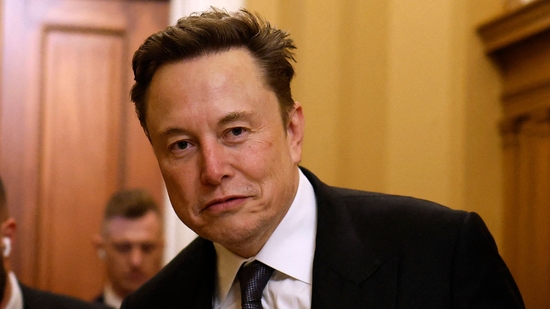Elon Musk, the billionaire CEO of Tesla, SpaceX, and owner of X (formerly Twitter), is no stranger to controversy. From radical business decisions to eyebrow-raising tweets, Musk has a history of making headlines. However, his latest move has ignited a digital firestorm, this time involving Dogecoin (DOGE), the meme cryptocurrency he has openly championed. Recently, an internal email from Musk threatening Tesla employees with termination if they failed to meet performance expectations went viral. The leak caused a frenzy on social media, sparking debates about workplace ethics, labor rights, and Musk’s management style. But the fallout didn’t end there. Soon after the email leak, Dogecoin, the cryptocurrency Musk has repeatedly endorsed, was flooded with an unprecedented wave of spam transactions. The connection between Musk’s workplace ultimatum and the DOGE network chaos has left many wondering: coincidence or targeted attack?
To understand why Dogecoin became the center of this digital upheaval, one must first recognize Musk’s deep association with the meme coin. Since 2019, Musk has frequently tweeted about DOGE, driving its price to wild highs with mere words. His influence reached new heights when Tesla started accepting Dogecoin for merchandise and SpaceX followed suit for certain transactions. Musk’s playful attitude toward the cryptocurrency market has often turned heads. At times, he has joked about making Dogecoin the “currency of Mars” or integrating it into X for transactions. With such an influential backer, DOGE has amassed a cult-like following of investors and enthusiasts. However, this popularity has also made the network a prime target for manipulation and attacks.
Shortly after Musk’s threatening email to Tesla workers went public, Dogecoin’s network became inundated with spam transactions. Blockchain analysts observed a dramatic increase in microtransactions, significantly clogging the network and raising transaction fees. According to on-chain data, thousands of negligible-value transactions flooded the system, causing congestion and slowing down legitimate transfers. While some experts speculate that this was merely a bot-driven attack, others believe it could be a coordinated effort by disgruntled individuals seeking to retaliate against Musk. Given that Musk’s leadership style often polarizes opinions, it wouldn’t be far-fetched to assume that former or current employees—or even critics—could be behind the disruption.
Several theories have emerged regarding the motive behind the DOGE spam attack. Many online activists and critics have labeled Musk’s Tesla email as harsh and authoritarian. Some speculate that the spam attack was orchestrated by those upset with Musk’s handling of Tesla employees. Given Musk’s vocal support of Dogecoin, attacking its network could be seen as a symbolic protest against his policies. The crypto world is rife with manipulation. Some analysts believe that the spam attack could have been an attempt to drive down DOGE’s price artificially, allowing large investors (often called “whales”) to buy the dip. This tactic, known as a “bear raid,” is not uncommon in volatile cryptocurrency markets. With Musk’s Tesla email making headlines, Dogecoin naturally came into focus due to Musk’s connection to the token. Opportunistic actors may have used this moment to create confusion in the crypto market, attracting attention while executing pump-and-dump schemes.
The Dogecoin developer community quickly took notice of the attack and began implementing countermeasures. One proposed solution is adjusting the transaction fees to disincentivize spam transactions. Additionally, developers are exploring methods to enhance network security and prevent future attacks of this scale. Despite these efforts, the attack has reignited conversations about Dogecoin’s vulnerabilities. Unlike Bitcoin or Ethereum, which have more robust infrastructures and security measures, Dogecoin relies on a network that is relatively easier to spam. This event underscores the need for further technical improvements if Dogecoin is to be adopted for mainstream transactions.
Elon Musk’s ability to influence cryptocurrency markets remains undeniable. Whether it’s a single tweet or a leaked email, his actions often send ripples across financial and digital ecosystems. The spam attack on Dogecoin following the Tesla email incident highlights just how interconnected Musk’s personal and business decisions are with the crypto world. For critics, this event serves as yet another example of the dangers of placing too much influence in the hands of one individual. Musk’s advocacy for Dogecoin has undoubtedly brought mainstream attention to the coin, but it has also made it a battleground for digital warfare. Meanwhile, for Dogecoin supporters, the attack is just another hurdle in the coin’s evolution. If anything, it demonstrates the cryptocurrency’s resilience and the need for stronger security mechanisms to prevent future disruptions.
The spam attack on Dogecoin following Musk’s Tesla email controversy is a fascinating example of how digital ecosystems can be weaponized in response to real-world events. Whether the attack was a form of protest, market manipulation, or just an opportunistic stunt, it underscores the vulnerabilities of meme coins and the broader crypto market. As Dogecoin developers work to mitigate such threats, one thing remains clear—Elon Musk’s influence in the crypto space is as powerful as ever, for better or worse. With Musk continuing to shake up industries and push technological boundaries, the intersection of his business decisions and digital assets will likely remain a hotbed of controversy for years to come.
